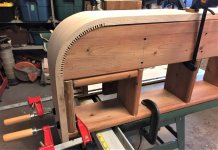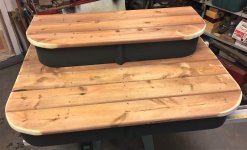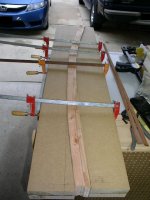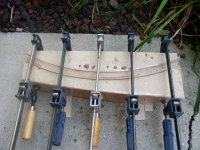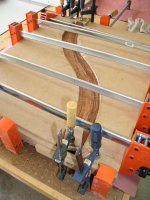John Pollman
Member
- Messages
- 1,343
- Location
- Rochester Hills, MI
Question about forming wood slats.
I've had them for a long time, but I think it's about time to get started. I have a bunch of seats that were taken out of Tiger Stadium in Detroit before it was demolished. The folding part of the seat and the backs are slats that are about 5/8" thick. The seats are fairly flat, but the backs have a curve to them.
I haven't decided which wood to use yet. I've got to see if I can figure out what the original pieces are first. I'm assuming some sort of hardwood. I've bent wood in the past and have a nice steam box. I like steaming and bending wood. Let's say they are 5/8" thick and I decided to use, say Maple for the slats. I'm assuming that it would be better to use two or three thin pieces and laminate them to a form. That would work better than trying to form a solid 5/8", right? It seems like they would be easier to form, and would hold their final shape better. I have a bandsaw, so resawing is no problem.
Thanks for any input.
I've had them for a long time, but I think it's about time to get started. I have a bunch of seats that were taken out of Tiger Stadium in Detroit before it was demolished. The folding part of the seat and the backs are slats that are about 5/8" thick. The seats are fairly flat, but the backs have a curve to them.
I haven't decided which wood to use yet. I've got to see if I can figure out what the original pieces are first. I'm assuming some sort of hardwood. I've bent wood in the past and have a nice steam box. I like steaming and bending wood. Let's say they are 5/8" thick and I decided to use, say Maple for the slats. I'm assuming that it would be better to use two or three thin pieces and laminate them to a form. That would work better than trying to form a solid 5/8", right? It seems like they would be easier to form, and would hold their final shape better. I have a bandsaw, so resawing is no problem.
Thanks for any input.



